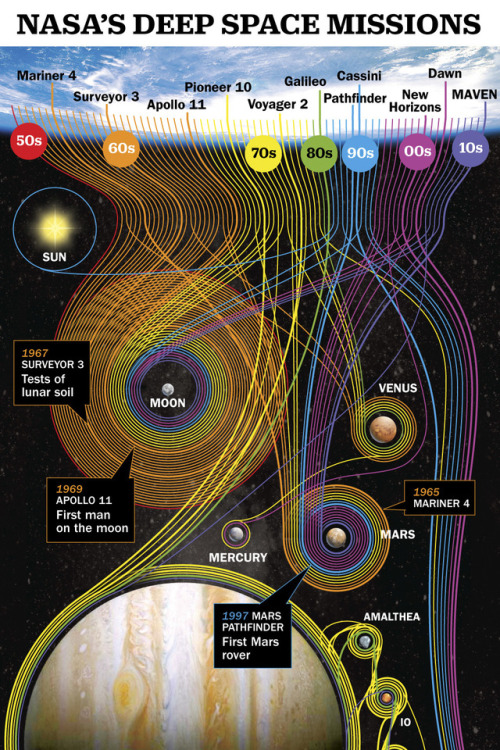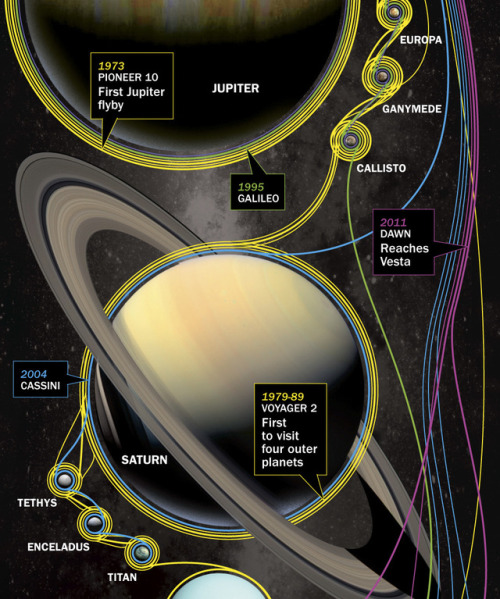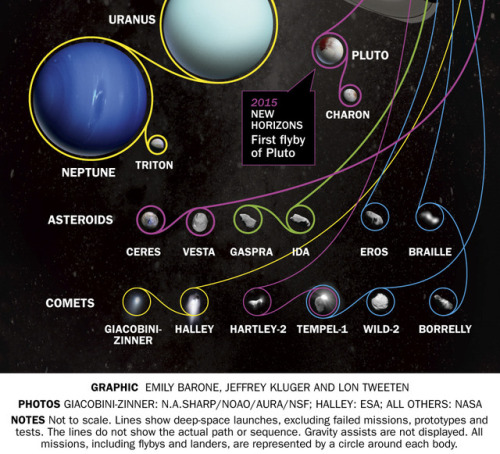‘That Was A Quick Flight’: How Astronauts Kept Ice Cool While Their Rocket Malfunctioned At 4,970mph




‘That was a quick flight’: How astronauts kept ice cool while their rocket malfunctioned at 4,970mph and plummeted back to Earth in harrowing 7G 'ballistic re-entry’ before hugging their loved-ones on the landing pad as Russia opens CRIMINAL probe.
Two astronauts kept ice cool as their rocket traveling at thousands of miles an hour malfunctioned on the edge of space while carrying them to the International Space Station, cockpit audio reveals.
Russian Aleksey Ovchinin and American Nick Hague made it back to Earth alive this morning after the booster on their Soyuz rocket broke at 164,000 feet and the rocket automatically turned back during a dramatic 7G 'ballistic re-entry’.
Ovchinin retained an enviable sang-froid as he realised what was happening, after they were rocked violently around in their seats by the force of the booster malfunction.
'An accident with the booster, 2 minutes, 45 seconds. That was a quick flight,’ he said in a calm voice in a streamed video of the incident.
'We’re tightening our seatbelts,’ Ovchinin said on the video.
At that moment the two astronauts were experiencing weightlessness, when in an ordinary launch they should still have been pinned to the back of their seats by the force of the rocket surging upwards at 4,970mph.
Russia says it has opened a criminal investigation and grounded all Soyuz flights. The accident comes weeks after a hole was discovered in the International Space Station amid talk from the Russian space authorities of deliberate sabotage.
Video footage from the launch at the Baikonur Cosmodrome shows a large plume of smoke coming from the rocket at the moment it failed and footage from inside the capsule shows the two astronauts being violently shaken about.
The accident bears similarities to the 1986 Challenger disaster when one of its boosters failed at lift-off causing an explosion that killed seven.
Astronauts have been involved in Soyuz malfunctions twice before, one in 1983 when a crew was forced to eject from a Soyuz rocket as it exploded on the launchpad. In 1975 a Soyuz capsule crashed back to Earth from 90 miles up after a rocket failure, but the crew survived.
The rocket, which was designed in the 1960s, has also had one booster fail in similar fashion to today’s malfunction. In 2002 a booster rocket malfunctioned and the rocket which was carrying a satellite crashed in Kazakhstan killing one person on the ground.
In total Soyuz rockets have been launched 745 times of which 21 have failed. Thirteen of those failures have been since 2010, calling into question the continued reliability of the rocket.
Search and rescue teams were scrambled to the touchdown location as NASA revealed the descent meant the Russian-built Soyuz MS-10 spacecraft had to take 'a sharper angle of landing compared to normal’.
The Russians have suspended Soyuz flights to the space station while they investigate the cause of the booster failure.
The Soyuz is the only way to get people to the space station at the moment but officials insist the astronauts currently on the space station have enough supplies.
NASA rookie Nick Hague and second-time flyer Aleksey Ovchinin of the Russian space agency were setting off for a six-month mission at the International Space Station Thursday, on a relatively rare two-man launch.
A spokesperson for NASA said that rescue teams have now reached Hague and Ovchinin and they’ve been taken out of the capsule and were in 'good condition’.
The craft’s landing engines and parachute system were said to have done their job as normal despite the enormous G-force acting on both the shuttle and crew during the landing.
Shortly after the incident rescue crews and paratroopers were rushed the emergency landing site in the barren Kazakh steppe to provide support for the crew.
NASA had issued a worrying tweet on Thursday morning saying: 'There’s been an issue with the booster from today’s launch. Teams have been in contact with the crew.’
'The capsule is returning via a ballistic descent, which is a sharper angle of landing compared to normal. Search and rescue teams are heading towards the expected touchdown location of the spacecraft and crew.’
Cosmonaut Alexander Volkov commented: 'The guys are lucky that they remained alive. They had reached a good height so it was possible to descend in their capsule.’
More info, pictures, diagrams, videos at this link: https://www.dailymail.co.uk/news/article-6264339/Rocket-launch-booster-malfunction-forces-astronauts-return-Earth-ballistic-entry.html
More Posts from Astrosciencechick and Others
This is so important. I have two years left of my Bachelor degree, and it took me 16 years to get my associate. Never give up, even if you have to put those goals on hold (sometimes multiple times), because life happens. Make yours worth it.
just because someone’s accomplishing more than you are right now doesn’t mean you’re failing. success isn’t a race


NGC 6888: The Crescent Nebula


NGC 3576, Statue of Liberty Nebula
I love this! Our SPS club is building a memorial to Cassini, and it should be finished and installed by March!
Ultra-Close Orbits of Saturn = Ultra-Cool Science
On Sept. 15, 2017, our Cassini spacecraft ended its epic exploration of Saturn with a planned dive into the planet’s atmosphere–sending back new science to the very last second. The spacecraft is gone, but the science continues!

New research emerging from the final orbits represents a huge leap forward in our understanding of the Saturn system – especially the mysterious, never-before-explored region between the planet and its rings. Some preconceived ideas are turning out to be wrong while new questions are being raised. How did they form? What holds them in place? What are they made of?

Six teams of researchers are publishing their work Oct. 5 in the journal Science, based on findings from Cassini’s Grand Finale. That’s when, as the spacecraft was running out of fuel, the mission team steered Cassini spectacularly close to Saturn in 22 orbits before deliberately vaporizing it in a final plunge into the atmosphere in September 2017.

Knowing Cassini’s days were numbered, its mission team went for gold. The spacecraft flew where it was never designed to fly. For the first time, it probed Saturn’s magnetized environment, flew through icy, rocky ring particles and sniffed the atmosphere in the 1,200-mile-wide (2,000-kilometer-wide) gap between the rings and the cloud tops. Not only did the engineering push the spacecraft to its limits, the new findings illustrate how powerful and agile the instruments were.
Many more Grand Finale science results are to come, but today’s highlights include:
Complex organic compounds embedded in water nanograins rain down from Saturn’s rings into its upper atmosphere. Scientists saw water and silicates, but they were surprised to see also methane, ammonia, carbon monoxide, nitrogen and carbon dioxide. The composition of organics is different from that found on moon Enceladus – and also different from those on moon Titan, meaning there are at least three distinct reservoirs of organic molecules in the Saturn system.

For the first time, Cassini saw up close how rings interact with the planet and observed inner-ring particles and gases falling directly into the atmosphere. Some particles take on electric charges and spiral along magnetic-field lines, falling into Saturn at higher latitudes – a phenomenon known as “ring rain.” But scientists were surprised to see that others are dragged quickly into Saturn at the equator. And it’s all falling out of the rings faster than scientists thought – as much as 10,000 kg of material per second.

Scientists were surprised to see what the material looks like in the gap between the rings and Saturn’s atmosphere. They knew that the particles throughout the rings ranged from large to small. They thought material in the gap would look the same. But the sampling showed mostly tiny, nanograin- and micron-sized particles, like smoke, telling us that some yet-unknown process is grinding up particles. What could it be? Future research into the final bits of data sent by Cassini may hold the answer.

Saturn and its rings are even more interconnected than scientists thought. Cassini revealed a previously unknown electric current system that connects the rings to the top of Saturn’s atmosphere.

Scientists discovered a new radiation belt around Saturn, close to the planet and composed of energetic particles. They found that while the belt actually intersects with the innermost ring, the ring is so tenuous that it doesn’t block the belt from forming.

Unlike every other planet with a magnetic field in our Solar System, Saturn’s magnetic field is almost completely aligned with its spin axis. Think of the planet and the magnetic field as completely separate things that are both spinning. Both have the same center point, but they each have their own axis about which they spin. But for Saturn the two axes are essentially the same – no other planet does that, and we did not think it was even possible for this to happen. This new data shows a magnetic-field tilt of less than 0.0095 degrees. (Earth’s magnetic field is tilted 11 degrees from its spin axis.) According to everything scientists know about how planetary magnetic fields are generated, Saturn should not have one. It’s a mystery physicists will be working to solve.

Cassini flew above Saturn’s magnetic poles, directly sampling regions where radio emissions are generated. The findings more than doubled the number of reported crossings of radio sources from the planet, one of the few non-terrestrial locations where scientists have been able to study a mechanism believed to operate throughout the universe. How are these signals generated? That’s still a mystery researchers are looking to uncover.
For the Cassini mission, the science rolling out from Grand Finale orbits confirms that the calculated risk of diving into the gap – skimming the upper atmosphere and skirting the edge of the inner rings – was worthwhile.

Almost everything going on in that region turned out to be a surprise, which was the importance of going there, to explore a place we’d never been before. And the expedition really paid off!
Analysis of Cassini data from the spacecraft’s instruments will be ongoing for years to come, helping to paint a clearer picture of Saturn.
To read the papers published in Science, visit: URL to papers
To learn more about the ground-breaking Cassini mission and its 13 years at Saturn, visit: https://www.nasa.gov/mission_pages/cassini/main/index.html
Make sure to follow us on Tumblr for your regular dose of space: http://nasa.tumblr.com.
It’s only two things.
Imagine where you could be by this time next year. Now do the work




Deep Space Missions










-
 andromeda1023 liked this · 6 years ago
andromeda1023 liked this · 6 years ago -
 i-am-a-space-child liked this · 6 years ago
i-am-a-space-child liked this · 6 years ago -
 wachsurfer2018 liked this · 6 years ago
wachsurfer2018 liked this · 6 years ago -
 teddyshrew liked this · 6 years ago
teddyshrew liked this · 6 years ago -
 oursj-p liked this · 6 years ago
oursj-p liked this · 6 years ago -
 spacetimewithstuartgary reblogged this · 6 years ago
spacetimewithstuartgary reblogged this · 6 years ago -
 keliana856 reblogged this · 6 years ago
keliana856 reblogged this · 6 years ago -
 keliana856 liked this · 6 years ago
keliana856 liked this · 6 years ago -
 the-telescope-times reblogged this · 6 years ago
the-telescope-times reblogged this · 6 years ago -
 the-telescope-times liked this · 6 years ago
the-telescope-times liked this · 6 years ago -
 darkelus-blog liked this · 6 years ago
darkelus-blog liked this · 6 years ago -
 matthewjopdyke liked this · 6 years ago
matthewjopdyke liked this · 6 years ago -
 kindofspacey liked this · 6 years ago
kindofspacey liked this · 6 years ago -
 astrosciencechick reblogged this · 6 years ago
astrosciencechick reblogged this · 6 years ago -
 larryrickard liked this · 6 years ago
larryrickard liked this · 6 years ago -
 hoalex13 liked this · 6 years ago
hoalex13 liked this · 6 years ago -
 welches-the-timelord reblogged this · 6 years ago
welches-the-timelord reblogged this · 6 years ago -
 welches-the-timelord liked this · 6 years ago
welches-the-timelord liked this · 6 years ago -
 grievance-s liked this · 6 years ago
grievance-s liked this · 6 years ago -
 andromeda1023 reblogged this · 6 years ago
andromeda1023 reblogged this · 6 years ago